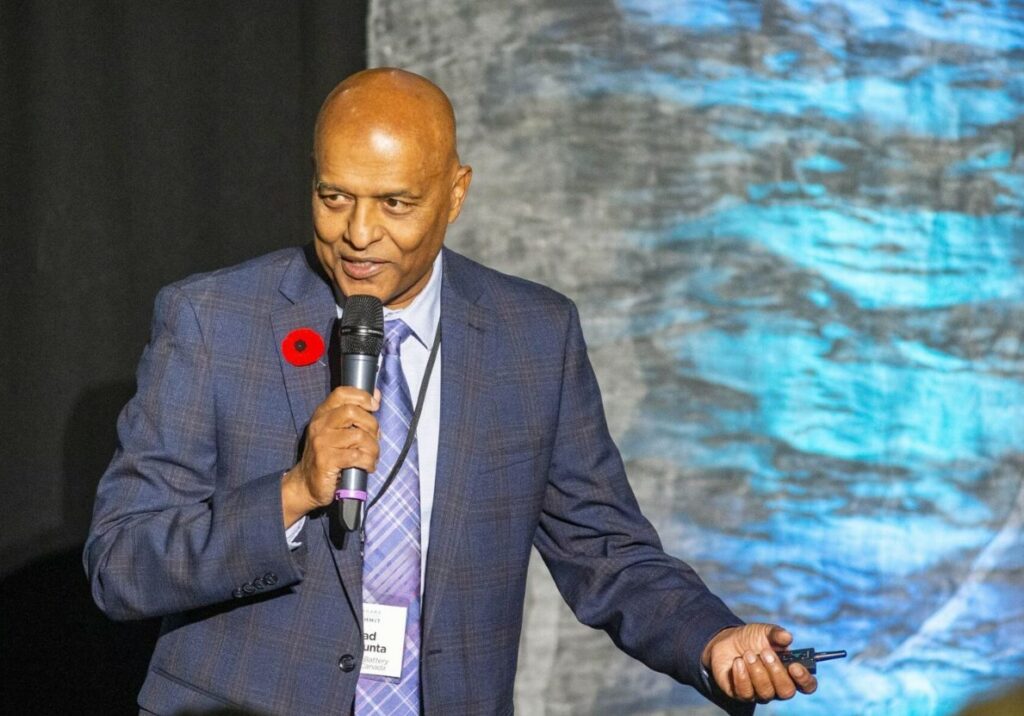Source: The Standard
Asahi Kasei Corp. had the world to choose from when selecting a site for its multibillion-dollar battery separator plant.
It chose Port Colborne.
The location of its facility that will employ about 1,000 people, producing battery components primarily for the automotive industry, followed six months of consideration, said N. Prasad Puttagunta, vice-president of the project expected to be completed by 2027.
“As beautiful of a community that you are, there are a lot of choices for people to look at for projects,” he told an audience of about 350 local business and political representatives while delivering the keynote address at the Greater Niagara Chamber of Commerce (GNCC) economic summit at White Oaks Conference Resort and Spa in Niagara-on-the-Lake Tuesday.
He shared the “ugliness behind the scenes” about how the multinational corporation chose Niagara for its plant, as well as improvements needed to make the region more attractive for other large investments.
“If we leave here today and we don’t have some ideas of things we can do that improve on what we already do … we’re not going to win the next big projects,” he said.
He said the facility in Port Colborne “is one of the largest grassroots-built projects that Asahi Kasei has taken on.”
It’s an investment of more than $1.7 billion for just the first phase. The total cost will be roughly $5 billion, he said.
Puttagunta called it “a huge project” for a Tokyo-based company that does $20 billion a year in revenue.
“But it’s also exciting,” he added.
Although Niagara is “a wonderful place to be,” he said there was a lot of competition for the investment from the century-old company that employs 50,000 people in about 100 other companies worldwide.
“The world is our playground right now so we can look anywhere in the world for this,” he said.
“So why Niagara? Of all places that are available, why this region?”
Although he grew up in Western Canada, Canada was not Puttagunta’s first choice.
“I was the first one to say, ‘Why would we want to go to Canada? It’s kind of cold up there. There’s nobody up there. How are we going to have the people to support our business and all the things that we need?’”
He said the company developed a matrix of about 200 criteria, listing “things that we must have,” as well as “things we would like to have.”
Having access to 110 megawatts of electricity was on the must-have list.
“We had huge power requirements, and we wanted it to be green,” Puttagunta said. “A lot of the power sources in the U.S. are not green. They’re still using a lot of natural gas and in some areas coal, and we wanted to stay away from that.”
If a site lacks an item on the must-have list, “it’s done,” he said.
“We move on to the next site.”
The like-to-have list included items like having “Japanese restaurants nearby,” he quipped.
“I’m like, yeah, tough. There is a Japanese restaurant and two hours away you can get some Japanese grocery stores. We’ll make it work,” Puttagunta said. “Obviously, that’s not a high criteria, but we do look at things like that.”
Despite Niagara’s success, he said there’s room for improvement.
“Let’s not get drunk on our own icewine,” he said. “It makes for a wicked hangover.”
Puttagunta said prior speakers during the summit spoke about “a lot of good things that we’re doing and working on to make this happen.”
“Please keep doing those things, but what else can you do? As much as I love the region, I think there are some real challenges,” he said.
“No. 1, we have to win the housing race. Having to pay $600,000 or $700,000 for a house is not sustainable business.”
And although Brock University and Niagara College were key components in luring Asahi Kasei to the area, he said “we have to make sure those college programs are adaptable for the future.”
He said having access to skilled workers is another challenge.
“We’re bringing in very specialized equipment from Japan and Korea to help manage our facility. There’s nobody here who knows how to service that equipment,” Puttagunta said. “You’re lucky that was just a strong want, and not a must have, otherwise I would not be here. We’re finding ways to make that work.”
And while Niagara has a significant supply chain with ships and trains hauling cargo, he said other options are needed to expedite the process, along with faster processing time.
He said a shipment from Japan might take 20 days to get here, but it takes 60 days before it reaches its destination while awaiting customs paperwork.
“If we can improve that, inventory goes down and your confidence in the system goes up.”
Puttagunta said industries also need better access to upper-tier government representatives.
“The federal guys are great, but they don’t take our calls like you (local) guys do,” he said. “We should work together to figure out how to make that happen.”
Puttagunta said the community also helped bring Asahi Kasei to Niagara.
“Canadians are so awesome,” he said. “It’s just a fun place to be … We’re really enjoying being here.”
GNCC chief executive officer Mishka Balsom said Puttagunta’s presentation was one of several during the economic summit to enhance Niagara’s economic viability.
“With each panel (discussion) we were trying and aiming to come away with actionable items that we can move forward with,” she said.

